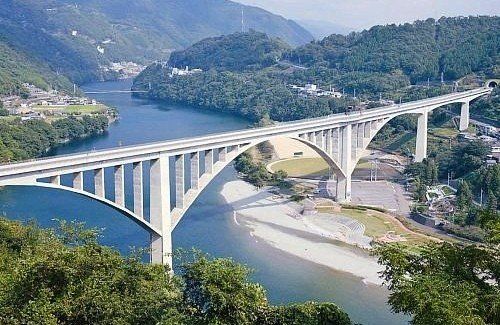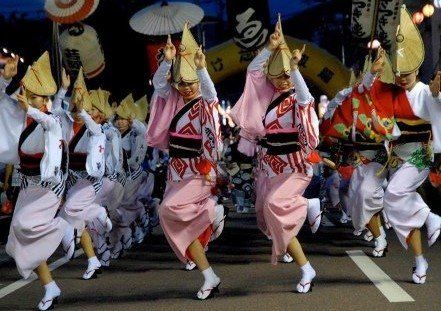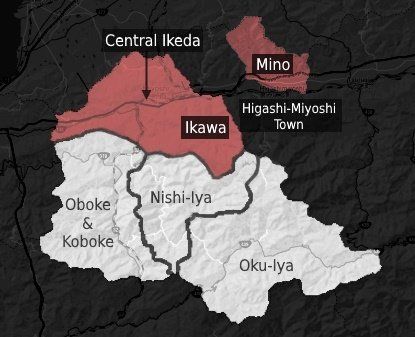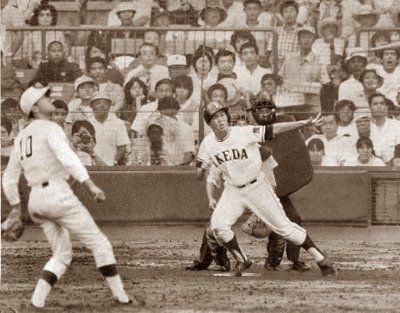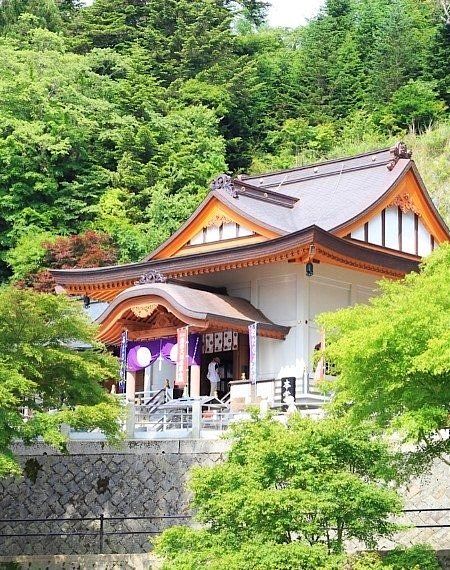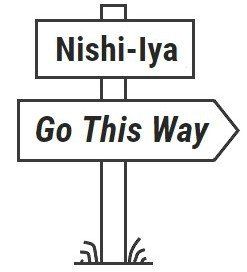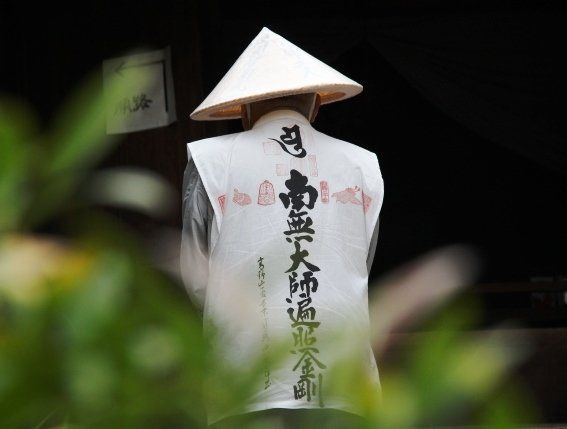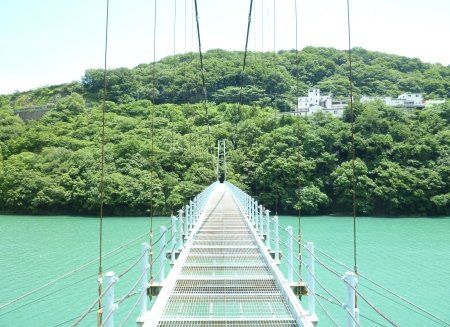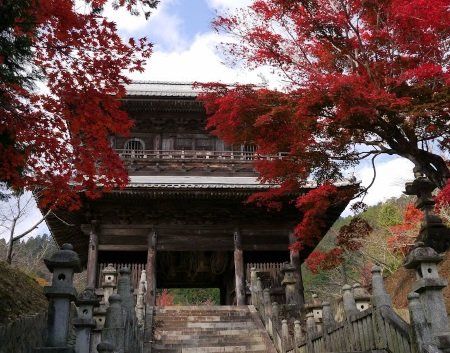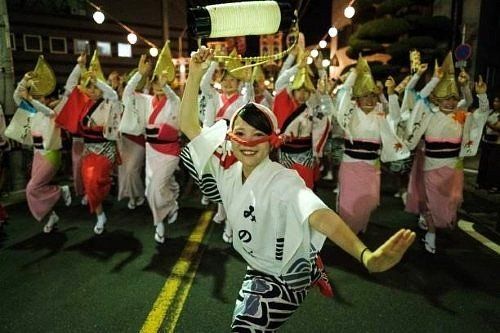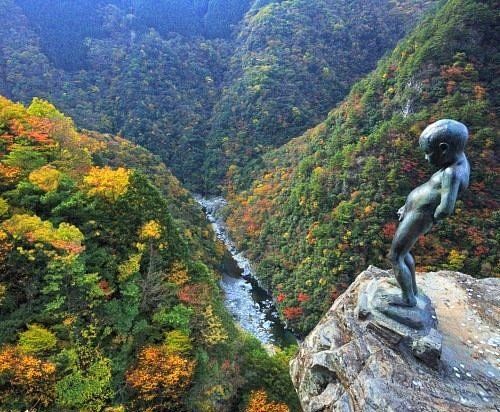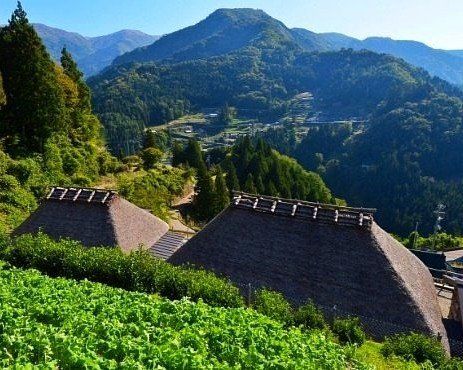With its central Shikoku location on the banks of the Yoshino River after it emerges from the gorges of Oboke and Koboke, the town of Ikeda has been a center for commerce, culture, and activty for centuries. From here the Yoshino River Valley begins to expand in width as it heads eastward towards Tokushima City on the coast. Being that the rapids of the gorges prevented vessels from passing, in the past farmers from the neighboring valleys brought their harvests (particularly tobacco) into Ikeda for trading and to send it down the river to the city and beyond, and accordingly, Ikeda grew in wealth and importance.
Though trading boats no longer ply the river nor is tobacco grown in the hills, Ikeda has remained a noted transit point as it is home to the junction of the JR Dosan and JR Tokushima train lines. The Tokushima Expressway also passes through here before splitting into the Kochi Expressway and Matsuyama Expressway, and the Awa-Ikeda Bus Terminal links Ikeda to not only to Oboke and Iya, but also to Kobe and Osaka.

